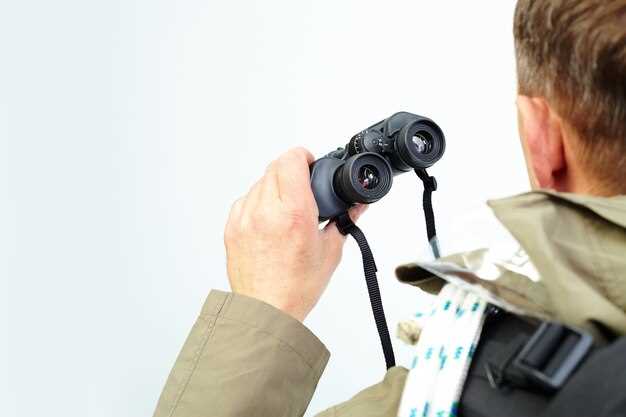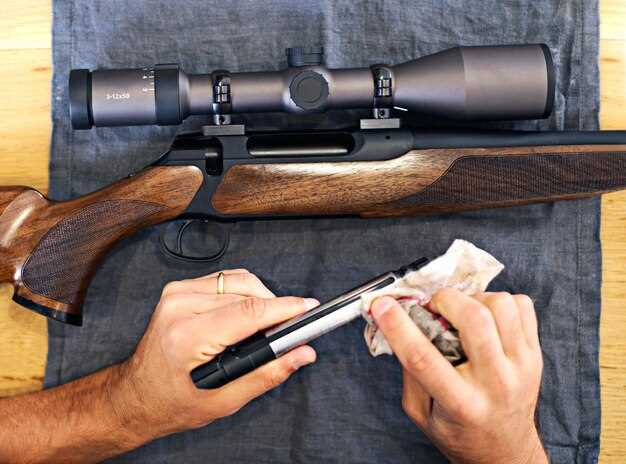
What to consider when buying a rifle scope

When it comes to enhancing your shooting experience, selecting the right scope is crucial. A rifle scope can significantly impact your accuracy and performance, making it essential to understand the important factors to evaluate before making a purchase. By focusing on specific characteristics, you can ensure that your investment serves your shooting needs effectively.
One of the primary elements in choosing a scope is magnification. This feature determines how much closer you can observe your target, which is vital for long-range shooting. Different shooting scenarios require varying levels of magnification; thus, understanding your typical shooting distances is key. Whether you need a fixed or variable magnification scope, being aware of the specific requirements of your shooting style will guide you in making the right choice.
Furthermore, the quality of the optics should not be overlooked. The clarity and brightness of your scope will play a significant role in your ability to identify targets under different lighting conditions. High-quality lenses with multi-coating can enhance light transmission and reduce glare, ultimately providing a clearer view. Evaluating these optical characteristics alongside magnification will lead you to select a scope that truly meets your needs.
Understanding Magnification: Choosing the Right Power
When selecting a rifle scope, understanding magnification is crucial. Magnification refers to how much closer a scope brings your target compared to viewing it with the naked eye. Choosing the right magnification power can significantly impact your shooting accuracy and overall performance. This guide will help clarify key considerations when evaluating magnification options.
Here are some important factors to keep in mind:
- Purpose of Use: Determine the primary use of the rifle scope. Will it be for hunting, target shooting, or long-range shooting? Different scenarios require different magnification levels.
- Magnification Range: Rifle scopes typically come with fixed or variable magnification. Consider the advantages of each:
- Fixed Magnification: Simplicity and reliability. Ideal for certain applications like competitive shooting.
- Variable Magnification: Versatility in changing distances. Allows for adjustment according to the target’s distance.
- Object Size and Distance: Assess the typical size of the targets and their distance. Higher magnification is necessary for distant and smaller targets, while lower power works for closer, larger targets.
- Field of View: Higher magnification often results in a narrower field of view. Balance the need for detail with situational awareness, especially in dynamic outdoor environments.
A common magnification scale for rifle scopes is expressed as a ratio, such as 3-9x, where the first number indicates the lowest magnification and the second number the highest. Here are considerations for specific power ranges:
- Low Power (1-4x): Suitable for close-range engagements, typically within 100 yards. Excellent for hunting in dense wooded areas.
- Medium Power (4-12x): This range provides flexibility for both close and moderate distances, making it a popular choice for various shooting scenarios.
- High Power (12x and above): Best for long-range shooting. Enables precise aiming at distant targets but may require steadier handling and advanced skills.
In conclusion, selecting the appropriate magnification power for your rifle scope involves considering various factors such as your shooting environment, target size, and personal preferences. Make informed decisions based on this guide to enhance your accuracy and shooting experience.
Evaluating Reticle Options: Which Design Fits Your Needs?

Choosing the right reticle for your rifle scope is crucial for achieving optimal accuracy and enhancing your shooting experience. The reticle design can significantly affect your ability to acquire targets quickly and make precise shots, especially at varying distances.
Types of Reticles: The most common reticle types include duplex, mil-dot, and BDC (Bullet Drop Compensation). Each serves different purposes depending on the shooter’s style and application. A duplex reticle features thick posts that taper to a fine crosshair, providing a clear view for quick target acquisition. In contrast, a mil-dot reticle includes dots spaced along the crosshairs, allowing shooters to estimate range and make precise corrections for windage and elevation.
Magnification Considerations: As you evaluate reticle options, consider the scope’s magnification range. A high magnification scope may benefit from a finer reticle to maintain precision at long distances, whereas a lower magnification option can comfortably utilize a thicker reticle for ease of use in closer engagements. Make sure to test the reticle at different magnification levels to determine which design functions best across the range you intend to use.
Lighting Conditions: Another critical factor is the environmental conditions in which you will be shooting. Some reticles are designed for low-light situations, featuring illuminated elements that enhance visibility against dark backgrounds. If you often shoot at dusk or dawn, consider a scope that offers illuminated reticle options.
Personal Preference: Ultimately, the choice of reticle comes down to personal preference. Try out various reticle designs to see which aligns with your shooting style and comfort level. Whether you prioritize speed, precision, or versatility, selecting the right reticle will greatly enhance your performance and satisfaction with your rifle scope.
Assessing Durability and Weather Resistance: What to Look For

When selecting a rifle scope, evaluating durability and weather resistance is crucial for ensuring long-term performance and reliability. Begin by examining the construction materials. High-quality scopes are often made from aircraft-grade aluminum, which provides strength without being excessively heavy. Look for scopes that have a rugged outer casing to withstand harsh conditions and minor impacts.
Next, consider the scope’s weatherproofing features. A good rifle scope should be both waterproof and fog proof. Many manufacturers achieve this by sealing the scope to prevent moisture ingress and purging it with nitrogen or argon gas to eliminate internal fogging. Check the manufacturer’s specifications for IP ratings or specific waterproofing claims, as these can provide additional assurance of its resilience against the elements.
Another critical factor is the lens coating. Scratch-resistant coatings can enhance durability, while anti-reflective coatings improve visibility in varying light conditions. Confirm if the scope has multi-coated or fully multi-coated lenses to increase light transmission and reduce glare, which is essential for maintaining clarity during adverse weather.
Finally, assess the warranty and customer reviews. A robust warranty reflects the manufacturer’s confidence in the scope’s durability. User feedback can provide real-world insights into how well a scope performs under tough conditions. By following this guide on durability and weather resistance, you will be better equipped to select a scope that meets your needs for both performance and longevity.




